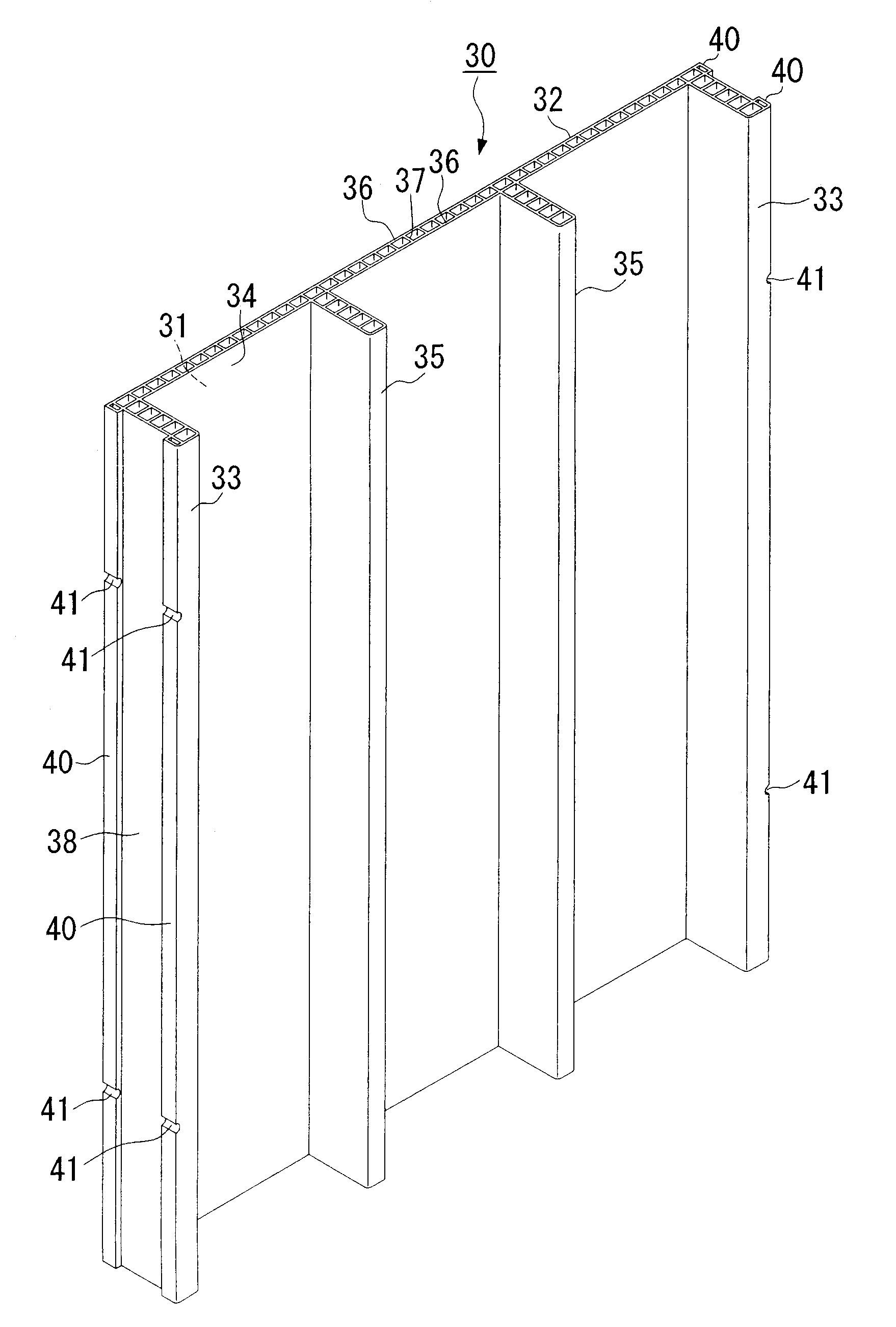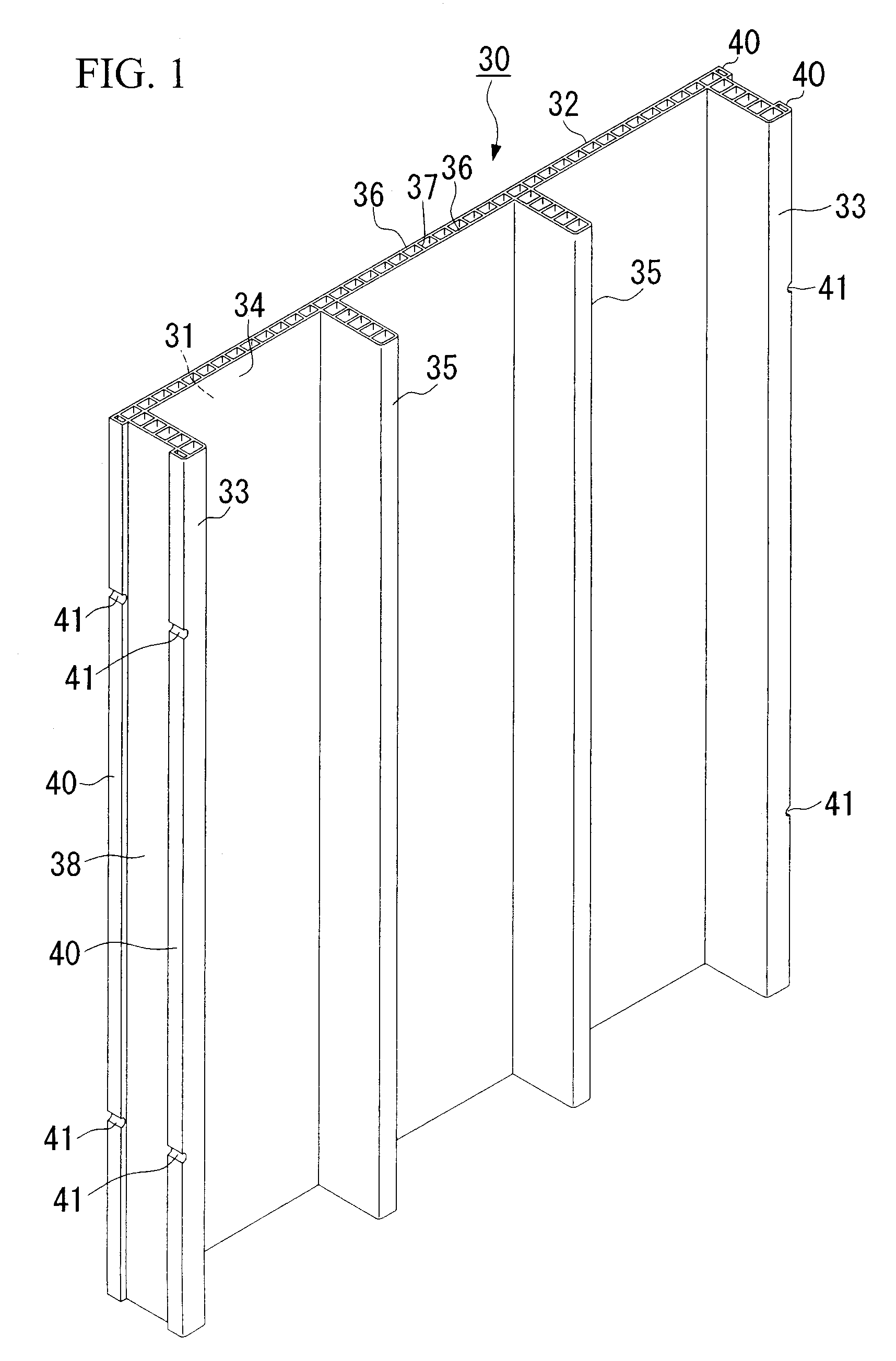Form panel for placing concrete
- Summary
- Abstract
- Description
- Claims
- Application Information
AI Technical Summary
Benefits of technology
Problems solved by technology
Method used
Image
Examples
embodiment 2
[0079] FIG. 7 shows another example of a plastic form panel for placing concrete of the present invention. This form panel 50 comprises generally a hollow sheathing section 52, one side of which forms a concrete placing surface 51, hollow side panel sections 53 bent out at right angles from both side edges of the sheathing section 52 on the opposite side of the sheathing section 52 to the concrete placing surface 51, two hollow projecting sections 60 extending in the vertical direction, provided on both side edges of an outside surface 58 of the side panel sections 53, and two hollow reinforcing panel sections 55 provided on a rear surface 54 of the sheathing section 52 which are parallel to the side panel sections 53. Here, the sheathing section 52, the side panel sections 53 and the reinforcing panel sections 55 are formed from hollow panels in which two panels 56 and a plurality of long reinforcing ribs 57 connecting these panels, are formed as an integrated unit.
[0080] Furthermo...
embodiment 3
[0113] FIG. 12 and FIG. 13 show another example of a plastic form panel for placing concrete of the present invention. This form panel 70 comprises generally a hollow sheathing section 72, one side of which forms a concrete placing surface 71, hollow side panel sections 73 bent out at right angles from both side edges of the sheathing section 72 on the opposite side of the sheathing section 72 to the concrete placing surface 71, two hollow projecting sections 81and 82 extending in the vertical direction, provided at the side edges of an outside surface 78 of the side panel sections 73, and four hollow reinforcing panel sections 75 which are parallel to the side panel sections 73.
[0114] Here, one of the sides of the projecting section 61 nearest the concrete placing surface 71 is coplanar with the concrete placing surface 71 of the sheathing section 72.
[0115] Furthermore, an inclined surface 83 is formed on the side surface of the projecting section 82 which faces the projecting sect...
PUM
| Property | Measurement | Unit |
|---|---|---|
| Transparency | aaaaa | aaaaa |
| Durability | aaaaa | aaaaa |
Abstract
Description
Claims
Application Information
 Login to View More
Login to View More - R&D
- Intellectual Property
- Life Sciences
- Materials
- Tech Scout
- Unparalleled Data Quality
- Higher Quality Content
- 60% Fewer Hallucinations
Browse by: Latest US Patents, China's latest patents, Technical Efficacy Thesaurus, Application Domain, Technology Topic, Popular Technical Reports.
© 2025 PatSnap. All rights reserved.Legal|Privacy policy|Modern Slavery Act Transparency Statement|Sitemap|About US| Contact US: help@patsnap.com



